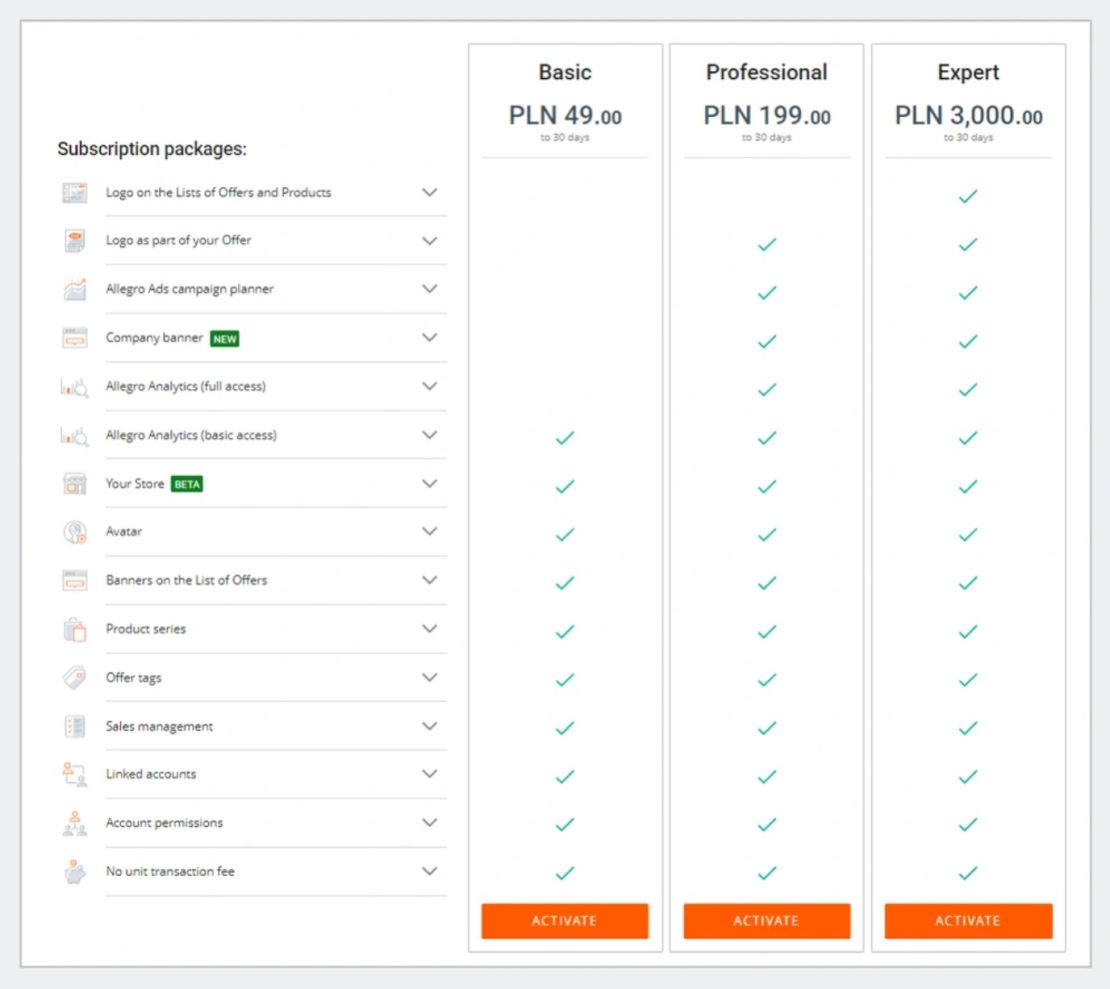What does work in internet marketing look like?
| By Monika Praczyk | 0 Comments

Table of contents
Czytasz teraz:
What does work in internet marketing look like?
Close
Are you aiming to shine in the digital marketing industry but unsure about how to achieve it? Fret not, for we’re here to assist you! Through this publication, you’ll gain insight into the landscape of internet marketing work and the essential skills required to thrive in it. Furthermore, you’ll delve into experts’ opinions and determine whether it’s worth securing a place in this industry for the long haul.
Gone are the days when we awaited colorful television advertisements with excitement, now relegated to the realm of forgetfulness. While there are still instances of creations that effectively capture our attention and linger in memory, the quest for original and captivating content becomes increasingly challenging as everything under the sun has been tried. Presently, messages – including advertisements – abound to such an extent that we find solace in silence. In this challenging landscape, how can entrepreneurs effectively present their offerings?
The answer is both evident and completely natural. The vast realm of the internet is the place for showcasing these offerings. It’s a (un)tamed space that offers immense promotional opportunities for tangible goods, services, and brands. Prominent companies and savvy entrepreneurs established themselves here some time ago. The pandemic created room for additional strategists who recognized the potential for sales growth in digital marketing. This inevitably gives rise to several questions, including one rather apparent query: How does one surpass the competition and remain atop the rankings? The support of proven players comes in handy. And this is where we get to the heart of the matter…
Before we delve into specifics and uncover the true identity of an internet marketing ninja, let’s first clarify what digital marketing actually entails.
(You will find the rest of the article below the form)
Contact us and get a free quote
We will analyze your business and prepare an individual price offer for the optimal marketing mix for you. Completely free.
Verseo spółka z ograniczoną odpowiedzialnością with its registered office in Poznań, at the following address ul. Węglowa 1/3, 62-122 Poznań is an administrator of your personal data.
About Verseo
Company’s office is located in Poznań. Company is entered into the register of entrepreneurs, kept by the District Court of Poznań – Nowe Miasto i Wilda in Poznań, 8th Commercial Division of the National Court Division under number 0000596164, NIP (Tax Identification Number): 7773257986. You can contact us by writing a letter on the address indicated above or e-mail:[email protected]
You have right to:
- access to your personal data,
- correct your personal data,
- demand to remove your personal data,
- restrain to process your personal data,
- object of process your personal data,
- transfer your personal data,
- withdraw consent.
If you think we process your personal data not in accordance with the law, you have right to object to supervisory authority – President of Personal Data Protection Office.
We process your personal data to:
- handle your question, based on art. 6 ust. 1 lit. 6 of General Data Protection Regulation
- promote our goods and services including ourselves in connection with your consent, based on art. 6 ust. 1 lit. a of General Data Protection Regulation
- protect or claim in connection with our reasonable interest, based on art. 6 ust. 1 lit. f General Data Protection Regulation
You share your personal data freely. Please remember that without sharing your personal data you will not be able to send us a message, and we will not be able to answer you.
We can share your personal data with trusted recipient:
- providers of tools made for: website analytics, marketing automation,
- hosting operators.
We will process your personal data by the time:
- which is necessary to achieve a specific purpose for which they were collected and after this term by the time which is necessary to protect or possible claim,
- of withdraw your permission .
We don’t process personal data in a way, which would involve making only automated decisions about you. More information about processing of personal data you can find in our privacy policy.

Internet Marketing – What Is It?
To paraphrase the words of Father Benedykt Chmielowski – everyone sees what marketing is. But what about internet marketing?
It’s the most dynamically developing branch of it. So, what does internet marketing entail?
It primarily focuses on websites and social media channels. Its core principles and goals are rather unsurprising – they include customer acquisition and retention, as well as building a strong brand image.
What does working in internet marketing involve? Primarily, it revolves around enhancing a company’s online visibility, which translates into sales results and increased consumer awareness. The most significant distinction between traditional marketing and digital marketing lies in the role of the audience. In the virtual world, “Your opinion matters to us!” Forget about passively receiving messages. Of course, this has its pros and cons.
When offering a product or service, you can count on a wealth of expressive forms in communication with your audience, the absence of a one-sided dimension, and practically real-time customer feedback. Not all comments will be positive, but that’s a topic for another article.
In what areas can we operate when it comes to engaging in marketing activities in the digital realm?
Working in online marketing – what does it involve?
Online marketing and the work of those who deal with this subject on a daily basis is a vast topic! Working in network marketing has many facets as a result. It involves actions not only with words in a broad sense, but also with sound, images, and data. Ultimately, it also involves optimizing created materials and making them more accessible – even for Google’s robots. So, what is online marketing and what does a marketer’s work look like? Below, we present selected activities undertaken as part of its implementation:
- Managing Google campaigns and optimizing them – creating advertising content on internet search engines, partner websites, and YouTube, monitoring campaign results, and making modifications to achieve the best outcomes using an optimal budget.
- Marketing activities on social media – Facebook, Instagram, LinkedIn, Twitter, and TikTok are utilized to their fullest potential! It involves not only managing a company’s account on these social platforms but also using their platforms for advertising campaigns. You can read more about them, for example, in our Adbook, which is available HERE,
- SEO – the battle for top positions in search engines. It’s worth mentioning that the goal of an SEO specialist is to acquire valuable and measurable traffic that brings tangible benefits to a brand. For example, increasing the number of website visits, boosting conversions from organic channels, reducing bounce rates, prolonging user time spent on the site, increasing the value of the shopping cart, and consequently, profits. Besides optimizing the website, creating content in line with SEO principles is also crucial.
- Content marketing – a specialist in this field excels at delivering engaging materials that connect the audience with the brand, build dedicated communities around it, raise awareness, or strengthen the brand’s position as an expert in a given field. It’s not just playing with words (which seasoned copywriters specialize in), but also crafting captivating video content, eye-catching images, thought-provoking podcasts, informative infographics, or enriching webinars that we can listen to.
- UX – user experience. This concept is based on the idea of a website’s usability and the experiences accompanying users when visiting a site. In short, users should quickly find the information they need and smoothly transition to conversions (such as making a purchase) without unnecessary disruptions. Intuitiveness is key! Does your website adhere to this principle? You can ponder this question or simply commission a professional UX audit. Yes, this is also a part of working in online marketing.
We’ve already explained what online marketing is. Which job would be most interesting for you? We hope you can answer that question now. If so, we can continue…
How to start a career in digital marketing?
Now that you know what you want to do and where you want to work… you surely want to know the answer to the question of whether it’s difficult to start a career in digital marketing and what qualifications are necessary to be the ideal candidate…
In the era of remote work, an important piece of information is that digital marketing and working from home go hand in hand. Monitoring campaign results, and creating inspiring blog posts, or video content can be done practically anywhere! Thanks to this, digital marketing is highly flexible – and the work in this industry is just as adaptable. Do you feel like traveling without constraints or working in the comfort of your home, wearing your favorite sweatpants? You’ll have room to maneuver!
If you already have a few years of experience and digital marketing is as familiar to you as the foam to a surfer, your chances significantly increase. You will definitely find work – and for quite good pay. The level of compensation will depend on the skills you possess, previous projects, negotiation skills, and the agency’s possibilities where you’ll be seeking employment. The question of which position you’ll be applying for is also important. You already know that there are plenty of opportunities! You can find out about the type of people we’re looking for in Verseo for digital marketing positions and what we offer them from our video (even though it’s about working in the SEO team):
video
If, however, you’re a “rookie,” you’ll need to put in a bit of effort. Students in fields related to digital marketing receive a solid foundation for later conquering the world. Especially the virtual one!
If, on the other hand, you’ve long finished your exams and thesis writing, and you’re not in a rush for quizzes and exercises, you can invest in specialized courses or participate in free webinars. Add to that a few mandatory readings, following valuable industry blogs with substantial content, watching video materials, and constantly keeping your finger on the pulse of marketing conducted online – and there you have it!
Remember that this industry is continually evolving, so you always need to stay current. There’s no room for stopping the expansion of your knowledge!
Maciej Popiołek, Head of Content Marketing at Verseo, also reveals how to start a career in digital marketing. In other words, the guy knows what he’s talking about!
“With today’s baggage of experiences, I can unequivocally state that the key to success in the field of digital marketing is specialization in a specific area. The times when a marketing specialist could do everything with the thought ‘it’ll work out somehow’ have irreversibly left us, just as the people of the Renaissance have left us.”
There are too many puzzle pieces for these puzzles to be assembled alone. The multitude of advertising channels (Google, Facebook, SEO, Allegro, Content, Influencer, Pinterest, TikTok, Youtube, and a multitude of other options), their increasing complexity, the ability to aggregate data and draw accurate conclusions from them for the purpose of optimizing actions – all of this means that currently, there’s no possibility to dedicate enough time to each of these domains to fully utilize them, as explained by Popiołek.
When it comes to defining the scope of digital marketing activities, does a company’s size matter?
Regardless of whether we’re talking about a small company or an SME, it’s reasonable to employ people with specific competencies to serve as pillars in one of the core advertising environments. For you, a potential employee, it’s important to realize which of these environments is most frequently used. If you start developing them, your skills will be valuable in the market, and it will be easier to find well-paying work. However, remember not to confine yourself to a single area – he continues.
After reaching an advanced level in a specific field, I would also recommend diversifying and deepening knowledge in a related field. The thing is, marketing channels are increasingly dependent on specific providers who sometimes, for unknown reasons, can change their “policies” or limit the possibilities of displaying ads. Ultimately, advertising accounts can also become targets of hacking attacks, and it’s not worth relying solely on one channel. I suggest creating competency blends (of course, much also depends on your interests):
- Google Ads + Facebook Ads
- SEO + Content marketing
- Content marketing + Facebook Ads
- Marketplaces + Google Analytics
- Google Analytics + Google Ads
- SEO + Google Analytics
- Pinterest, Instagram, TikTok + Influencer Marketing
It’s also worth mentioning that competencies in a given field are developed differently and are not solely correlated with the time spent on a particular channel. For example, if two people appear, where the first one worked with Google Ads accounts in an agency for 2 years, and the second one worked on Ads in a single company for 5 years, statistically the first person should be better prepared to work in this environment, as they would have observed more non-standard situations and made different decisions based on a larger number of various accounts and data. The agency environment also strongly enforces optimizing actions and continuous self-education on the topic, which is extremely important for paid channels. So, remember that while training is valuable, every aspect of digital marketing is built on experience and learning from those more knowledgeable than us – concludes Maciej Popiołek in his statement.
Internet Marketing – a job for everyone?
Besides skills and experience, there are also natural predispositions. What qualities should a person who finds internet marketing appealing possess? The job will be easier if they have a high level of attention span and the ability to work on multiple projects simultaneously. In this world, there’s no such thing as “taking a break” or a moment to “step back.” Oh no!
The rodeo is still ongoing, the show must go on! This is not a joke. If you’re not comfortable with adrenaline and working at full throttle, it’s probably not your piece of cake. Working in digital marketing is based on agility of mind and a constant readiness to take action. Do social media ever sleep? Of course not! Can campaigns be handled half-heartedly, and can content be allowed to take a back seat? No, no, and no again. So, you’re in for dynamic action and constant change. As we know, that’s the only constant, especially in the virtual world. Boredom won’t touch you!
What other personality traits will be useful for winning the Digital Marketer of the Year award every year? Klaudia Nakonieczna, Talent Acquisition Specialist at DigitalX, told me about this:
As a company specializing in recruitment in the digital and e-commerce field, we often handle projects related to internet marketing. We pay particular attention to creative individuals who are dedicated and deeply interested in the subject. In this industry, you have to stay up to date all the time! During recruitment, verifying both hard and soft skills is incredibly important. Apart from analytical thinking, excellent organizational skills, and finding one’s place in the broadly defined virtual space, openness to interpersonal contacts, and a positive attitude are also valuable. These qualities are essential for maintaining good relationships with clients.
In summary, you will need: creativity, the ability to wield words, PRO-level interpersonal and communication skills, as well as analytical thinking, and the ability to ‘connect the dots’ and draw conclusions. Do you have all that? Well then, internet marketing and working in this field are tailor-made for you! What to do with this…?
For instance, you can take a look at the Verseo website and thoroughly explore the content in the Careers section. Who knows, maybe you’ll discover the sweet taste of digital marketing with us? Yum!























Recent Comments